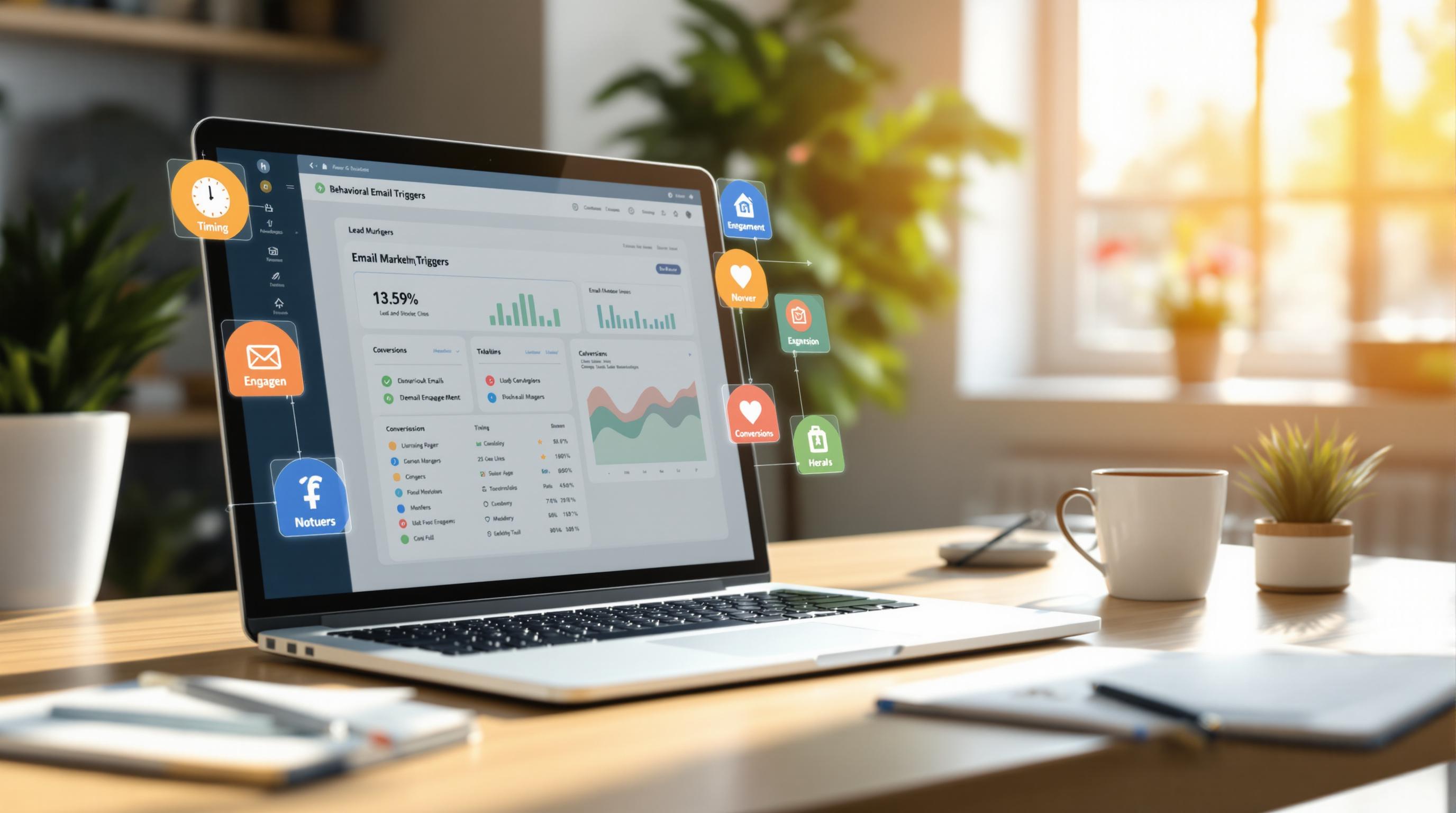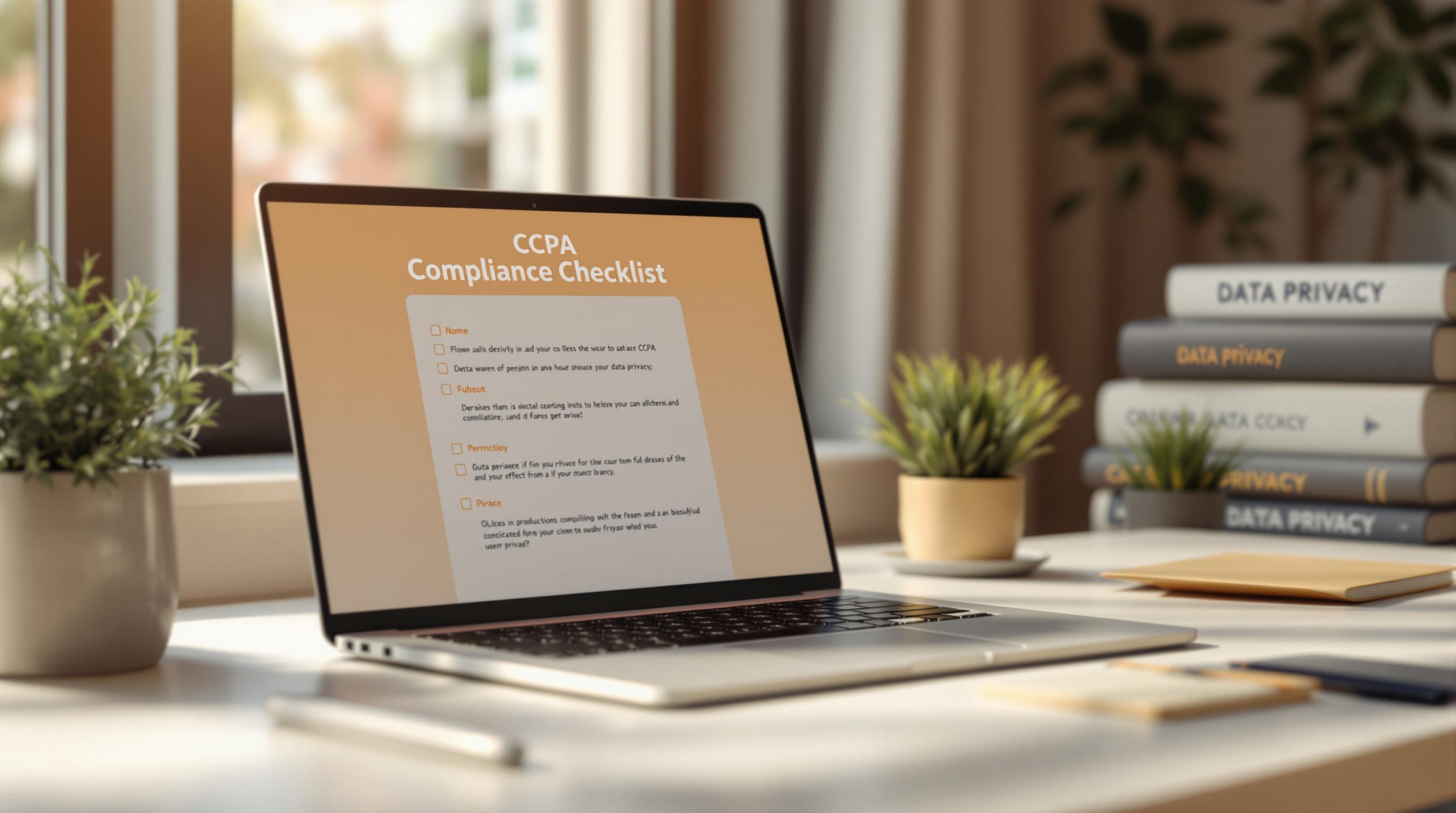Email scraping is an automated way to collect email addresses from websites and online sources. Here's what you need to know:
- It's a powerful tool for building contact lists and generating leads
- Laws like GDPR and CCPA regulate how you can use scraped emails
- Popular tools include Hunter.io, Snov.io, and GetProspect
- Best practices focus on ethical scraping and data quality
Is it legal? It's complicated:
- Scraping public data is generally okay
- Accessing private info is illegal
- Many websites prohibit scraping in their terms of service
- Privacy laws like GDPR have strict rules about personal data
Key takeaways:
- Follow laws and website rules
- Get permission before sending marketing emails
- Use reputable tools and clean your data regularly
- Focus on quality over quantity in your email lists
Email scraping can boost your marketing, but do it responsibly to avoid legal issues and build trust with your audience.
Related video from YouTube
Email Scraping Basics
Ever wondered how companies build massive email lists so quickly? Let's explore email scraping and uncover its secrets.
What is Email Scraping?
Email scraping is like a digital detective hunting for email addresses across the internet. It's an automated process that gathers email addresses from websites, social media, forums, and other online sources.
It's a super-efficient way to build contact lists without mind-numbing manual data entry. Instead of hours of copying and pasting, email scraping tools do the hard work for you.
How Email Scraping Works
Here's a peek behind the curtain:
1. Target Selection
You pick your hunting grounds. This could be industry websites, LinkedIn profiles, or Google Maps listings for local businesses.
2. Web Crawling
The email scraper crawls through the chosen websites, scanning every corner for potential email addresses.
3. Pattern Recognition
The tool uses algorithms to spot text that looks like an email address. It's searching for the "@" symbol, domain names, and common email formats.
4. Data Extraction
When it finds a match, the scraper grabs that email address and adds it to your list.
5. Data Cleaning
Many advanced tools clean up the data, removing duplicates and checking that the emails are valid.
Why Businesses Use Email Scraping
You might wonder, "Why bother?" Well, email scraping can be a game-changer for businesses. Here's why:
- Supercharged Lead Generation: Say you sell high-end staplers to big companies. With email scraping, you could quickly build a list of office supply managers at Fortune 500 companies. That's a goldmine of potential leads.
- Laser-Focused Marketing: By scraping emails from specific types of websites, you can create targeted mailing lists. This means your marketing messages land in front of the right people.
- Spy on the Competition: Want to know who your rivals are talking to? Email scraping can help you uncover their client base or industry connections.
- Save Time and Resources: Manual data collection is old news. Email scraping automates a boring process, freeing up your team to focus on what they do best – selling and building relationships.
"Automating manual processes augment sales representatives enables sales teams to focus on selling rather than manual tasks." - Industry Expert
But it's not all smooth sailing. Email scraping walks a fine line between powerful marketing tool and potential privacy issue. That's why it's crucial to use this technology responsibly and ethically.
Always check a website's terms of service before scraping, and respect individual privacy. The goal is to build a quality list of contacts who might actually want what you're offering, not to become the next spam king.
Next up, we'll dive into the legal side of email scraping. Because nobody wants to end up in hot water while trying to grow their business.
Laws and Rules
Email scraping is a legal minefield. Let's break it down.
Can You Legally Scrape Emails?
Yes, but watch out.
Scraping public data? Go for it. Private info? That's a big no-no.
Here's the deal:
- Public data (like business directories): Fair game
- Private data (behind logins): Hands off
Just because you can scrape doesn't mean you should. Ethics matter.
Key Privacy Laws
Two big players:
1. GDPR (General Data Protection Regulation)
EU's data protection beast. Applies to anyone handling EU residents' data, no matter where you are.
2. CCPA (California Consumer Privacy Act)
California's GDPR cousin. Dealing with Californian data? Pay attention.
Both laws put people in charge of their data.
Following the Rules
Stay legal:
1. Get consent
GDPR says get clear permission. No sneaky tactics.
2. Provide opt-outs
Every email needs an easy way to unsubscribe.
3. Be transparent
Tell people what data you're collecting and why.
4. Minimize data
Only collect what you need. Less is more.
5. Secure the data
Protect what you collect. Data breaches = big fines.
"Unless you have the person's explicit consent it is now illegal to scrape an EU resident's personal data under GDPR." - Sanaea Daruwalla, Head of Legal at Scrapinghub.
Real consequences? In 2020, the Austrian Post got hit with a €9 million fine for messing up a data request. Don't make that mistake.
Tools and Setup
Let's explore email scraping tools and how to use them effectively. Picking the right tools can make a big difference in your email marketing success.
Best Email Scraping Tools
Here are some top tools for email scraping:
1. Hunter.io
Hunter.io is great for finding business email addresses:
- Free plan: 25 monthly searches
- Paid plans: Start at $49/month for 500 searches
- Features: Domain search and email verification
2. Snov.io
Snov.io offers an all-in-one prospecting platform:
- Free trial: 50 credits
- Paid plans: From $39/month for 1,000 credits
- Features: Domain search, email finder, and built-in verification
3. GetProspect
GetProspect is known for its user-friendly interface:
- Free plan: 50 valid emails
- Paid plans: Start at $49/month for 1,000 valid emails
- Features: LinkedIn prospecting tools and Chrome extension
Common Problems and Fixes
Even good tools can hit snags. Here's how to handle common issues:
1. CAPTCHA Challenges
To get around CAPTCHAs:
- Use rotating IP addresses
- Add delays between requests
- Try CAPTCHA-solving services if needed
2. IP Blocking
If websites block your IP:
- Use a proxy service like Rayobyte
- Rotate user agents
- Space out your requests randomly
3. Low-Quality Data
To improve data quality:
- Use email verification tools
- Cross-reference data from multiple sources
- Update and clean your email lists regularly
Email Extractor Tool Guide
Here's how to use the Email Extractor Tool:
1. Installation
Add the Chrome extension to your browser. It's quick and easy.
2. Selecting Your Plan
Choose a plan:
- Starter: $8.99/month (up to 5,000 email IDs)
- Growth: $39.99/month (up to 50,000 email IDs)
- Enterprise: $139.99/month (up to 1,000,000 email IDs)
3. Using the Tool
Browse websites and the tool will find email addresses automatically. It offers:
- AI-powered extraction
- One-click CSV download
- Email automation features
4. Best Practices
To get the most out of the Email Extractor Tool:
- Use it responsibly and follow data protection laws
- Combine it with other prospecting methods
- Keep your extracted email lists up-to-date and verified
sbb-itb-8abf799
Email List Quality
A big email list? Great. A clean, effective one? Even better. Let's explore how to keep your email list top-notch and results-driven.
Checking Email Accuracy
Ever had an important email bounce back? Not fun. Now imagine that happening to thousands at once. Ouch.
Here's how to keep your email list clean:
- Use email verification tools: Services like Hunter.io, Snov.io, and GetProspect don't just find emails – they check if they're real. Hunter.io offers 25 free monthly searches on their basic plan.
- Implement double opt-in: New subscribers confirm their email address. It's like a digital handshake saying, "Yep, I want your emails."
- Regular list cleaning: Think of it as spring cleaning for your email list. Aim to scrub it at least twice a year.
"A clean email list is a more engaged, more high-performing one." - The Email on Acid Team
Pro tip: Don't verify emails once and forget about it. People change jobs, ditch old email addresses, or lose interest. Regular checks keep your list fresh and engaged.
Reducing Failed Deliveries
High bounce rates are bad news for email marketers. They signal problems to you and email providers. Here's how to keep bounces low:
- Know your numbers: Aim for a bounce rate of 2% or less. If you're hitting 5% or higher, it's time to act.
- Segment inactive subscribers: No opens in 3-6 months? Try a re-engagement campaign or consider parting ways.
- Use a reputable email service: Good providers handle soft bounces automatically and help manage your sender reputation.
- Avoid purchased lists: It's tempting, but don't. Bought lists often contain outdated or fake emails that'll wreck your deliverability.
Natalie Sullivan, former retention marketing manager at Avex Designs, says:
"Keep an eye on email addresses that consistently bounce. High bounce rates can harm your sender reputation, so it's crucial to manage and update your list accordingly."
Fixing Common Issues
Email scraping isn't always smooth sailing. Let's look at some common problems and how to fix them.
Error Message Guide
When your scraper hits a snag, it often throws up error messages. Here's what they mean and how to fix them:
1. 404 Not Found
The page you're trying to scrape doesn't exist. Double-check your URLs and make sure the website structure hasn't changed.
2. 403 Forbidden
You've been blocked. This happens when a website spots unusual activity. To fix:
- Switch up your IP addresses
- Slow down your scraping
- Use a good proxy service like Rayobyte
3. 429 Too Many Requests
You're scraping too fast. Add random delays between requests to act more like a human.
4. 500 Internal Server Error
This is on the server's end. Give it a minute and try again. If it keeps happening, the website might be having issues.
"Understanding and handling these HTTP errors can make your web scraping projects way more reliable and efficient."
When Scraping Fails
Sometimes, your scraper just won't cooperate. Here's what to do:
1. Keep an Eye on Website Changes
Websites change, and your scraper needs to keep up. Regularly check the sites you're scraping and update your code as needed.
2. Use Logging
Logs are your best friend when debugging. Keep track of:
- How many emails you've grabbed
- The URL you're on
- Any error messages
3. Try/Catch Blocks Are Your Friend
Wrap your scraping code in try/catch blocks. This stops your whole scraper from crashing when it hits a problem.
4. Take Screenshots
When errors pop up, save a screenshot or HTML snapshot of the page. This can help you figure out what went wrong, especially if the issue comes and goes.
5. Check the Robots.txt File
Some websites spell out what you can and can't scrape in their robots.txt file. Ignore this at your own risk - you might get blocked fast.
6. Deal with Dynamic Content
Lots of modern websites load content with JavaScript. Tools like Selenium or Puppeteer can help you scrape this stuff.
7. Watch Out for Traps
Be careful of hidden links or email addresses that users can't see but scrapers can. These are often there to catch and block bots.
Best Practices
Email scraping can boost your lead generation and marketing. But you need to do it right. Let's look at how to keep your scraping ethical and effective.
Responsible Scraping Rules
Following the rules isn't just about staying out of trouble. It's about building trust. Here's what you need to know:
- Stick to public data: Only grab emails that are out in the open. Don't try to sneak into private areas.
- Check the robots.txt: This file tells scrapers what they can and can't do on a website. Always follow it.
- Use a real user agent: Let websites know who you are. It's just good manners.
- Don't rush: Space out your scraping. Act like a human, not a robot.
- Know the laws: GDPR and CCPA have strict rules about personal data. Make sure you follow them.
"Scraping publicly available data on the web is legal but you must consider data security and user privacy." - Informatica
Safety Steps
Protecting yourself while scraping is just as important as following the rules. Here's how to stay safe:
- Use good proxies: Get high-quality proxy servers. They'll help you avoid getting blocked. Rayobyte offers residential proxies that can help.
- Mask your data: If you accidentally grab personal info, hide it. Encrypt or anonymize sensitive data.
- Hide your tracks: Use tools like antidetect browsers. They change your browser's fingerprint, making it harder for websites to spot you.
- Clean your data: Scrub your email list at least twice a year. It keeps your emails deliverable and helps you avoid spam traps.
- Lock it down: Once you have those emails, keep them safe. Use encryption and limit who can access them.
- Let people opt out: Always make it easy for people to unsubscribe. It's not just nice - it's often the law.
Conclusion
Email scraping can boost your marketing reach. But you need to be smart about it.
Let's recap the key points:
Follow the Law (Or Pay Big)
Email scraping laws are tricky. In the US, the CAN-SPAM Act is the big one. Break it, and you could be out $51,744 per email. Ouch.
The FTC puts it simply:
"Following the law isn't complicated."
They're right. Be transparent and respect people's rights. It's not rocket science.
Focus on Quality
A huge email list full of duds is useless. Clean your data regularly. Aim for twice a year. Ditch the dead weight and double-check those addresses.
Be Ethical, Build Trust
Remember: every email is a real person. Respect their privacy. It's not just nice - it's smart business. Always let people opt out easily.
Use Tools Wisely
Hunter.io, Snov.io, and GetProspect can make scraping easier. But don't abuse them. Add delays between requests and switch up your IP addresses to avoid overloading servers.
Keep Up with Changes
The digital world moves fast. What works today might not tomorrow. Stay on top of privacy laws like GDPR and CCPA. Be ready to change your game plan when needed.
Email scraping can be powerful. But with great power comes great responsibility. Use it wisely, and you'll reap the rewards.
FAQs
Is scraping emails illegal?
Email scraping isn't black and white. It's more like a legal minefield. Here's the scoop:
It's not always illegal, but it can be. The difference? How you do it and what you do with the emails afterward.
Scraping public email addresses? Less risky. Hacking into private databases? Big no-no.
But here's the catch: even public data can be off-limits. Many websites say "no scraping" in their terms of service. Break those, and you could be in hot water.
Then there's privacy laws. GDPR in Europe and CCPA in California don't mess around. They've got strict rules about personal data.
Seamless.AI puts it this way:
"Verdict, extracting publicly listed emails through allowed methods is legal, but using those emails improperly or extracting from prohibited sources is likely illegal in most places."
Break these laws, and your wallet might feel it. GDPR fines? They can hit 4% of your global turnover or €20 million - whichever hurts more.
So, what's the smart move?
- Check local laws and website rules before you start.
- Get permission before you blast those emails with marketing.
- Someone says "stop emailing me"? Listen to them.
- Use tools like Email Extractor Tool that play by the rules.



